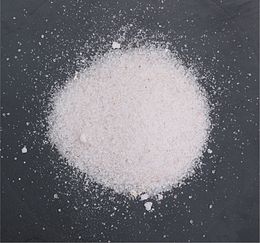
Back Kieseriet AF كيزريت Arabic Kieserita Catalan Kieserit (Mineral) German Kieserita Spanish Kieserita EU کیزریت FA Kiesérite French Kieserita GL Kizerit Croatian
| Kieserite | |
|---|---|
 | |
| General | |
| Category | Sulfate minerals |
| Formula (repeating unit) | MgSO4·H2O |
| IMA symbol | Ksr[1] |
| Strunz classification | 7.CB.05 |
| Dana classification | 29.6.2.1 |
| Crystal system | Monoclinic |
| Crystal class | Prismatic (2/m) (same H-M symbol) |
| Space group | C2/c |
| Unit cell | a = 7.51 Å, b = 7.61 Å c = 6.92 Å; β = 116.17°; Z = 4 |
| Identification | |
| Color | Colorless, grayish-white or yellowish |
| Crystal habit | Massive, granular; rarely as pyramidal crystals |
| Twinning | Contact on {001}, polysynthetic about [110] |
| Cleavage | {110} and {111} perfect |
| Fracture | Uneven |
| Tenacity | Fragile |
| Mohs scale hardness | 3.5 |
| Luster | Vitreous to dull |
| Streak | White |
| Diaphaneity | Transparent to translucent |
| Specific gravity | 2.57 |
| Optical properties | Biaxial (+) |
| Refractive index | nα = 1.520 nβ = 1.533 nγ = 1.584 |
| Birefringence | δ = 0.064 |
| 2V angle | 55° |
| Dispersion | r > v, moderate |
| Solubility | In water |
| References | [2][3][4] |
Kieserite, or magnesium sulfate monohydrate, is a hydrous magnesium sulfate mineral with formula (MgSO4·H2O).
It has a vitreous luster and it is colorless, grayish-white or yellowish. Its hardness is 3.5 and crystallizes in the monoclinic crystal system. Gunningite is the zinc member of the kieserite group of minerals.[5]
- ^ Warr, L.N. (2021). "IMA–CNMNC approved mineral symbols". Mineralogical Magazine. 85 (3): 291–320. Bibcode:2021MinM...85..291W. doi:10.1180/mgm.2021.43. S2CID 235729616.
- ^ "Kieserite data on Webmineral". Archived from the original on 2009-12-08. Retrieved 2009-04-26.
- ^ "Kieserite on Mindat.org". Archived from the original on 2009-03-19. Retrieved 2009-04-26.
- ^ "Kieserite in the Handbook of Mineralogy" (PDF). Archived (PDF) from the original on 2019-04-09. Retrieved 2020-06-08.
- ^ "Kieserite group on Mindat". Archived from the original on 2019-09-04. Retrieved 2020-06-08.